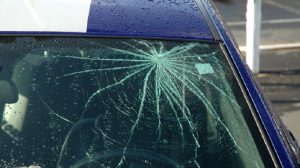
Motor vehicle owners everywhere may frequently experience environmental conditions and external factors that threaten car safety. For instance, extreme weather like sleet, hail, snow, heavy rain, and flooding can impact the state of a car’s exterior. In some areas, automobile owners and operators may have to look out for vandals or individuals who steal vehicles or parts of them. Likewise, living in big cities can expose motorists to a unique set of traffic, road conditions, logistics, and costs. For example, some Australian cities are seeing traffic jams and road congestion return to the levels they reached before the COVID-19 pandemic, as commuters forgo using public transport. Heavy traffic can be a challenge for some motorists to navigate, making it more likely that some drivers would hit, side-swipe, rear-end, or directly hit another’s automobile and cause damage to their vehicles, too. These factors and situations demonstrate the importance of having comprehensive car insurance.
What is comprehensive car insurance?
Comprehensive car insurance is an auto insurance coverage type that includes several types of damage. If you get into a car accident, you’ll have collision coverage to help you cover repair costs through comprehensive auto insurance no matter who’s at fault. Generally, some comprehensive coverage policies cover items inside your vehicle like baby capsules or car seats damaged in a collision. With comprehensive car insurance, you can also get coverage for mishaps to your car that have no relation to other vehicles. Perhaps you accidentally incur scratches on your car doors, or you hit the letterbox as you leave your driveway, causing slight damage. Comprehensive insurance can help you cover repair costs. There’s also coverage for weather damage to your vehicle. A comprehensive insurance policy can help you cover any damage caused by hail, earthquakes, hurricanes, tornados, storms, floods, fires, and other natural disasters.
What else does comprehensive coverage include?

Comprehensive insurance can be advantageous in situations when you need repairs, but it can also benefit you when you’re responsible for paying for physical damage done to someone else’s vehicle. For instance, with comprehensive insurance coverage, you’ll have coverage up to your policy’s limits if you cause property damage to another party’s vehicle. Under comprehensive auto insurance plans, you could also get your vehicle repaired if it incurs vandalism or replaced altogether if another party steals it.
Comprehensive car insurance coverage may be the best option for you.

Considering the beneficial aspects of comprehensive car insurance described above, obtaining this type of coverage may be the best move for car owners. In Australia, motor vehicle owners have four different types of coverage to choose from, with comprehensive plans being the insurance policies that provide the most insurance.
Australian car owners must at least have compulsory third-party insurance, but any additional car insurance coverage they take out is their choice. Such a car insurance policy is enough to cover any person you may injure in an auto accident, but it doesn’t include damage to their automobile or yours. Third-party property insurance takes such coverage to the next level, helping cover damage costs for the other person’s vehicle but not for yours. The next level up from that amount of coverage is third-party fire and theft insurance. With this type of coverage, drivers receive help covering their vehicle from theft or fire. By comparison, the collision coverage and additional benefits included in a comprehensive insurance policy make it the most advantageous policy type for motor vehicle owners. Whether the vehicle you own is an older car or a new car, comprehensive car insurance can help you save as much money as possible under any circumstances.



